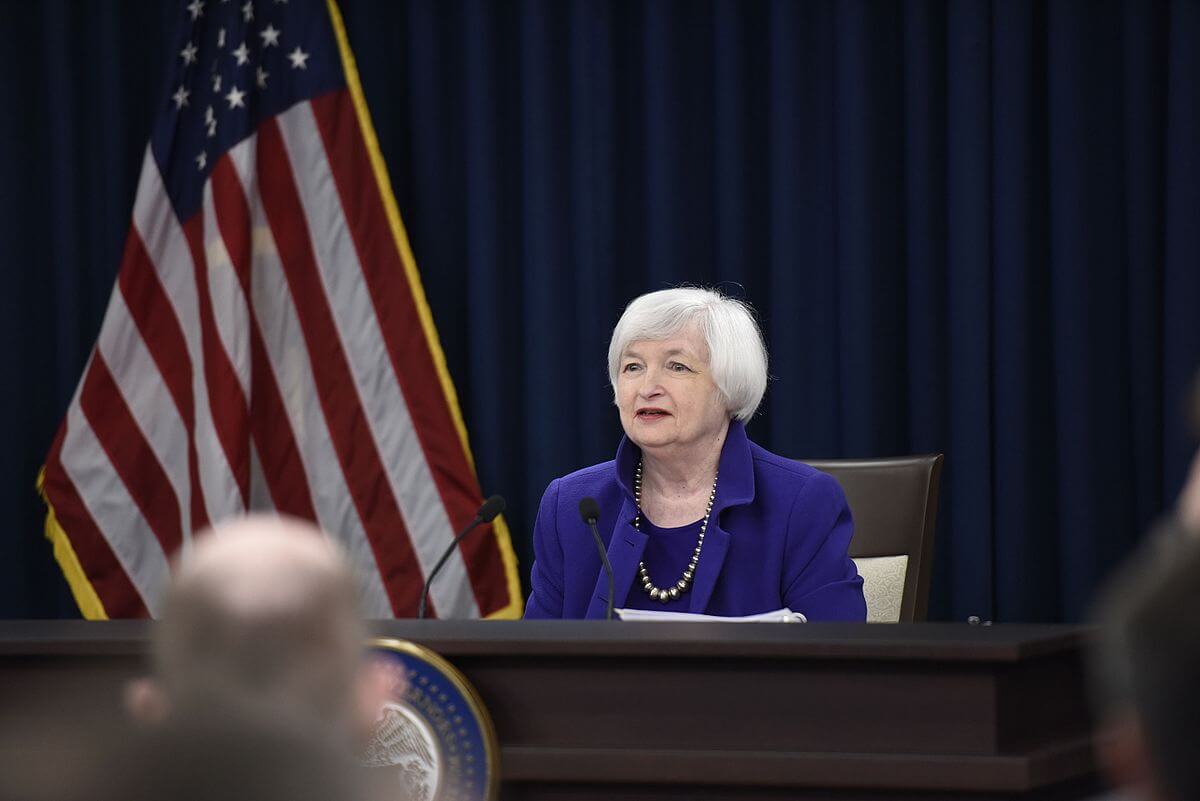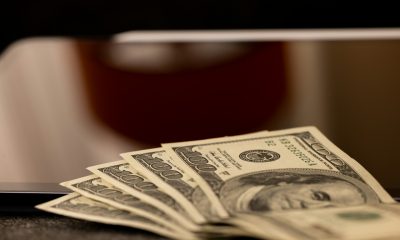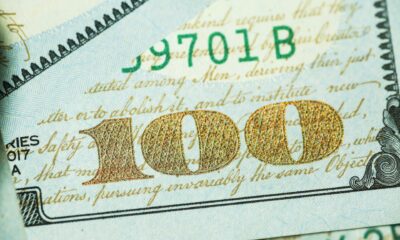Featured
The 4 percent 10-year note yield will be a floor not a ceiling
The expected yield of 10-year note is 4 percent in the coming months due to inflation, the absolute level of debt, as well as debt and deficits to GDP.

The two most important factors in determining the level of sovereign bond yields are the credit and inflation risks extant within a nation. When determining a country’s ability to service its debt investors must analyze not only the absolute debt level but also the ratios of debt and deficits to GDP. In addition, the current rate of inflation must also be viewed within the context of debt in order to make an accurate assumption as to the level of future inflation.
When analyzing historical measures of these criteria, the conclusion reached is that the U.S. 10-year Note yield should rise to at least four percent in the coming quarters.
The last time long-term interest rates were not the preoccupation of central banks was before the Great Recession, which began in December of 2007. Therefore, it is important to view where the 10-year Note was trading at that time in relation to inflation, the absolute level of debt, as well as debt and deficits to GDP.
The average yield on the 10-year Note was 4.6 percent during that year, with a high water mark of 5.23 percent. According to the BLS, Consumer Price Inflation (CPI) averaged 2.8 percent. The debt to GDP ratio was just 61 percent, and the annual deficit registered a paltry 1.1 percent of the economy. Importantly, the level of Publicly Traded debt was $5.1 trillion back in 2007.
Turning to the conditions of today, the 10-year Note yield has dropped to just under 2.9 percent; but those same metrics are foreboding much higher interest rates to come. While CPI averaged 2.1 percent last year, a mere 0.7 percentage points below 2007, debt levels have become gargantuan and are projected to skyrocket “big league” from here. As of the end of 2017, the debt to GDP ratio shot up to 103 percent of GDP, and the level of Publicly Trade Debt climbed to $14.8 trillion, which helped elevate the Deficit to a much higher — but still manageable compared to where we are headed–3.4 percent of GDP.
Therefore, it is rational to conclude that the Benchmark Treasury yield would already be greater than the 4.6 percent average seen back in 2007 if it were not for the still massive — but now rapidly waning — bid from global central banks.
However, the interest rate dynamics get much worse from there. In fiscal 2019, which begins this October, the deficit to GDP ratio is going to absolutely go into warp drive. The baseline scenario is for a $1.2 trillion deficit next fiscal year, according to the Committee for a Responsible Federal Budget. But you also must add to that figure the $360 billion worth of Treasury sales from the Federal Reserve. Therefore, the deficit to GDP then catapults to 7.5 percent of GDP. And if you add in the $240 billion worth Mortgage Backed Security sales from the Fed, which the primary dealers must also absorb and will crowd out Treasury purchases, the deficit rises to an incredible 8.6 percent of GDP!
Such a massive deficit in an era of relative peace-time prosperity is not only disgraceful, it is downright catastrophic. After all, the National Debt is now projected to rise to 135 percent of GDP by 2027. And when not if, the next recession strikes, the recipe for a complete bond market failure is already fait accompli, as annual deficits could broach $3 trillion!
Stock market perma-bulls are proffering a view reasons to counter the arguments for a pernicious spike in bond yields. All of which should prove to be false.

Janet Yellen believes a financial crisis can still happen in the near future. (Source)
Some take solace in the fact that the Fed will just stop raising short-term rates and thus stem the rising tide of the longer-term yields. However, central banks do not directly control yields out along the curve unless actively engaged in trading it. For example, the last time the Fed Funds Rate was where it now stands (1.4 percent) was back in August 2004; yet the 10-year yield still was above 4.25 percent. At that time the CPI was 2.6 percent, just a few tenths higher than today. In contrast, the Debt and Deficit to GDP was 59 percent and 3.3 percent respectively. Both of which are lower than now, and far better than what’s in store in the next few quarters. Hence, it is incorrect to assume a Fed going on hold will prevent the 10-year rate from mean reverting—at the very least.
Others argue that the money printing efforts from the Kamikaze Counterfeiter, Haruhiko Kuroda, over at the Bank of Japan (BOJ) will keep yields in check. However, offsetting the BOJ’s printing press and soon to follow a collapse of the yen, is the waning appetite for U.S. debt on the part of global sovereign banks and the near record low savings rate of just 2.4 percent for American consumers.
Oh, and by the way, the maniac money printer (Mario Draghi at the ECB) will be forced to completely end QE come the end of this year. Therefore, the German 10-year Bund should rise dramatically from its current 0.7 percent level, closer to the 4.5 percent yield witnessed prior to the Great Recession. This is true despite the humongous size of the ECB’s balance sheet, precisely because the debt to GDP ratios in the peripheral nations have just about doubled since 2008.
Another argument is the spacious and inane one about an influx of new retirees that will sit idly by and watch their bond holdings collapse in value simply because they are old and have no alternative. With bank cash deposit yields rising quickly, the rational to lock up savings in long-term bonds that are falling in price, especially bond funds that never mature, is untenable.
Of course, there is the proposition that falling stock prices and the ensuing recession will force investors back into the Safehaven of U.S. Treasuries. Under normal circumstances, this would be true. And maybe in the short-run, it will happen again. However, since annual deficits are already approaching double digits, it seems ludicrous to expect that a dramatic drop in revenue and a further explosion in deficits will compel investors to load up on Treasuries. Indeed, the lesson gleaned from the 2012 European debt crisis is that insolvent nations do not enjoy lower borrowing costs simply because the economy falls apart.
Lastly, most contend that the stock of Fed assets (currently $4.4 trillion) will prevent yields from rising anywhere near 4 percent. Nevertheless, even when reducing the near $15 trillion of Publicly Traded debt by the number of bonds held at the Fed, the debt to GDP ratio is still higher than the adjusted GDP ratio for 2007. Of course, what is even more important is the flow of Fed asset sales. This is because the erstwhile investor front-running of the Fed’s $85 billion per month asset purchase program will become front run sales ahead of the $50 billion per month dumping spree that will occur just eight months from now.
Nominal GDP increased by 5.3 percent in Q3, and by 5 percent during Q4 of 2017. The Atlanta Fed now predicts that Q1 2018 will post real GDP of 3.2 percent. With inflation rising at 2.1 percent YOY, that pushes nominal GDP above 5 percent for the last three quarters. And since the U.S. 10-year Note yield has historically moved in tandem with current-dollar GDP, it is a rational conclusion to expect the Benchmark yield to rise back to that nominal 5 percent level, as central banks remove their indiscriminate bond bids. Especially in light of the fact that those same bids will become indiscriminate offers come the end of this year on a net global basis.
So there really is only one hope for the bond (and stock) market bulls to keep the Benchmark rate from mean reverting, but it would prove to be only a temporary one at that. The new Fed Chair, Jerome Powell, may have to perform his best impression of Mario Draghi when he soon vows to do “whatever it takes” to keep long-term Treasury yields from rising. What Mr. Draghi essentially said back in July of 2012 was, ironically, that he would print as many euros as needed in order to save the euro. And by doing so, rescue the sovereign bond market and the economy. It was only a temporary salve in Europe and would be even less effective in the United States. This is because the inflationary impacts on the world’s reserve currency would be nothing short of devastating.
When realistically viewing the sovereign bond market in the context of massive increases in debt, deficits and central bank asset sales, you have the recipe for a complete fixed income implosion. Therefore, you have the potential for Benchmark yields to soar way past the four percent level in the next few quarters…unless the printing presses get ramped up again worldwide.
Those soaring sovereign bond yields in the U.S., and indeed across the globe, will fracture the Junk Bond and leveraged loan markets, which will send Collateralized Loan Obligations crashing. According to S&P Global Market Intelligence, volume for leveraged loans increased 53 percent in 2017, putting it on pace to surpass the 2007 record of $534 billion. At the same time the borrowing window will slam shut on the 10 percent of total corporations that must issue new debt just to pay off existing obligations because cash flow is less than interest expenses, this according to the Bank for International Settlements.
According to the CMG Group, if the yield on the 10-year Treasury were to rise from the low of 1.4 percent seen in 2016, back to the 4.4 percent level; the loss to investors would equal 24 percent. Losing nearly one-quarter of investors’ value in a “risk-free” Treasury — especially after 37 years of inculcation that prices always go up — will truly be shocking.
The recession resulting from the plunge in asset prices and mounting debt service costs will send those deficits and debt to GDP ratios soaring even higher than already projected. Hence, yields could rise unabated without the central bank’s attempt to once again cap interest rates.
Such are the necessary ramifications from having governments push over $14 trillion worth of sovereign debt into negative yields for multiple years and then having the hubris to believe the free market’s interest rate revenge will be, as Ms. Yellen avowed, “like watching paint dry”.
The tremors felt in the capital markets these past few weeks were merely the prelude to the massive earthquake that is in store. Hence, as the gravitational force of the free market grabs yields well above the 4 percent level, the Fed will be forced into a watershed capitulation in an attempt to halt the collapse of asset prices yet again.
Nevertheless, even though the Fed may be able to reignite asset bubbles for the third time in the last two decades, what will be destroyed forever is the notion that central banks can ever allow interest rates to normalize. The final result will be an unprecedented decline of the U.S. dollar against gold. And, ultimately, a complete collapse in all fixed income instruments that the central bank isn’t actively buying.
Ms. Yellen foolishly stated before abdicating her throne that there would not be another financial crisis in our lifetimes. Rather, more correctly, what she should have predicted is that the faith in fiat currencies and free markets will soon become forever destroyed.
—
DISCLAIMER: This article expresses my own ideas and opinions. Any information I have shared are from sources that I believe to be reliable and accurate. I did not receive any financial compensation in writing this post, nor do I own any shares in any company I’ve mentioned. I encourage any reader to do their own diligent research first before making any investment decisions.
(Featured image via DepositPhotos.)

-

 Fintech4 days ago
Fintech4 days agoRobinhood Expands to Europe with Tokenized Stocks and Perpetual Futures
-

 Business2 weeks ago
Business2 weeks agoAmerica’s Debt Spiral: A $67 Trillion Reckoning Looms by 2035
-

 Crowdfunding1 week ago
Crowdfunding1 week agoTasty Life Raises €700,000 to Expand Pedol Brand and Launch Food-Tech Innovation
-

 Cannabis4 days ago
Cannabis4 days agoCannabis Clubs Approved in Hesse as Youth Interest in Cannabis Declines


























You must be logged in to post a comment Login